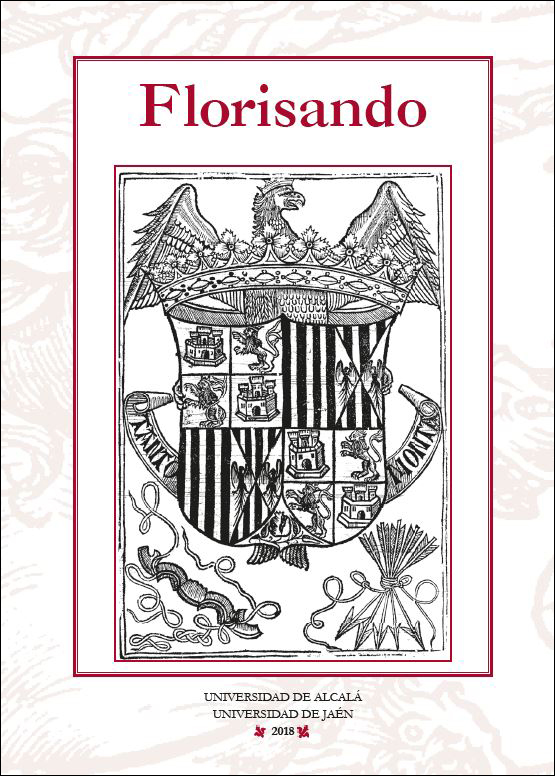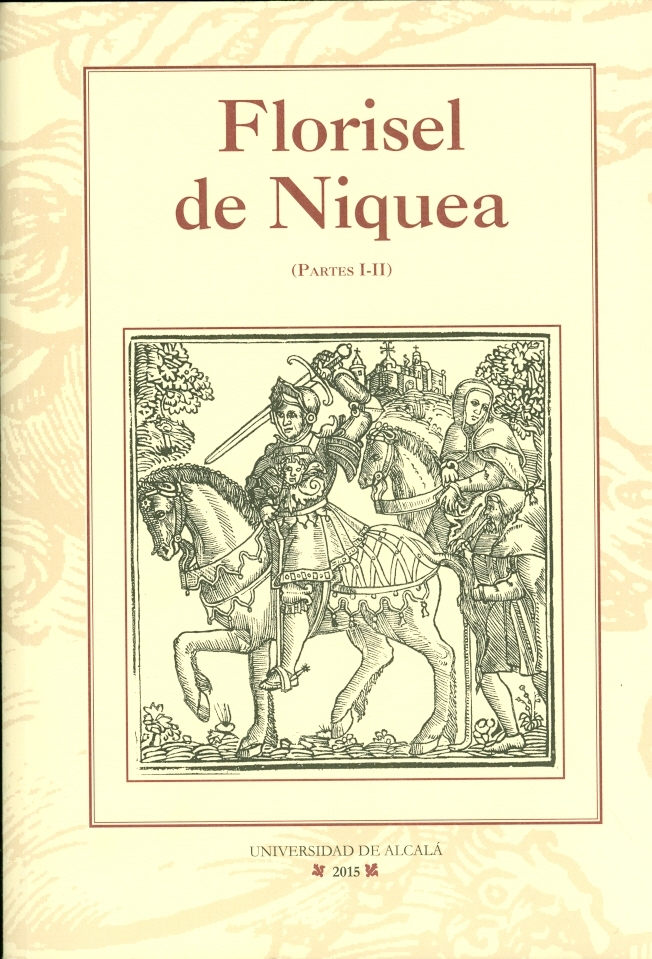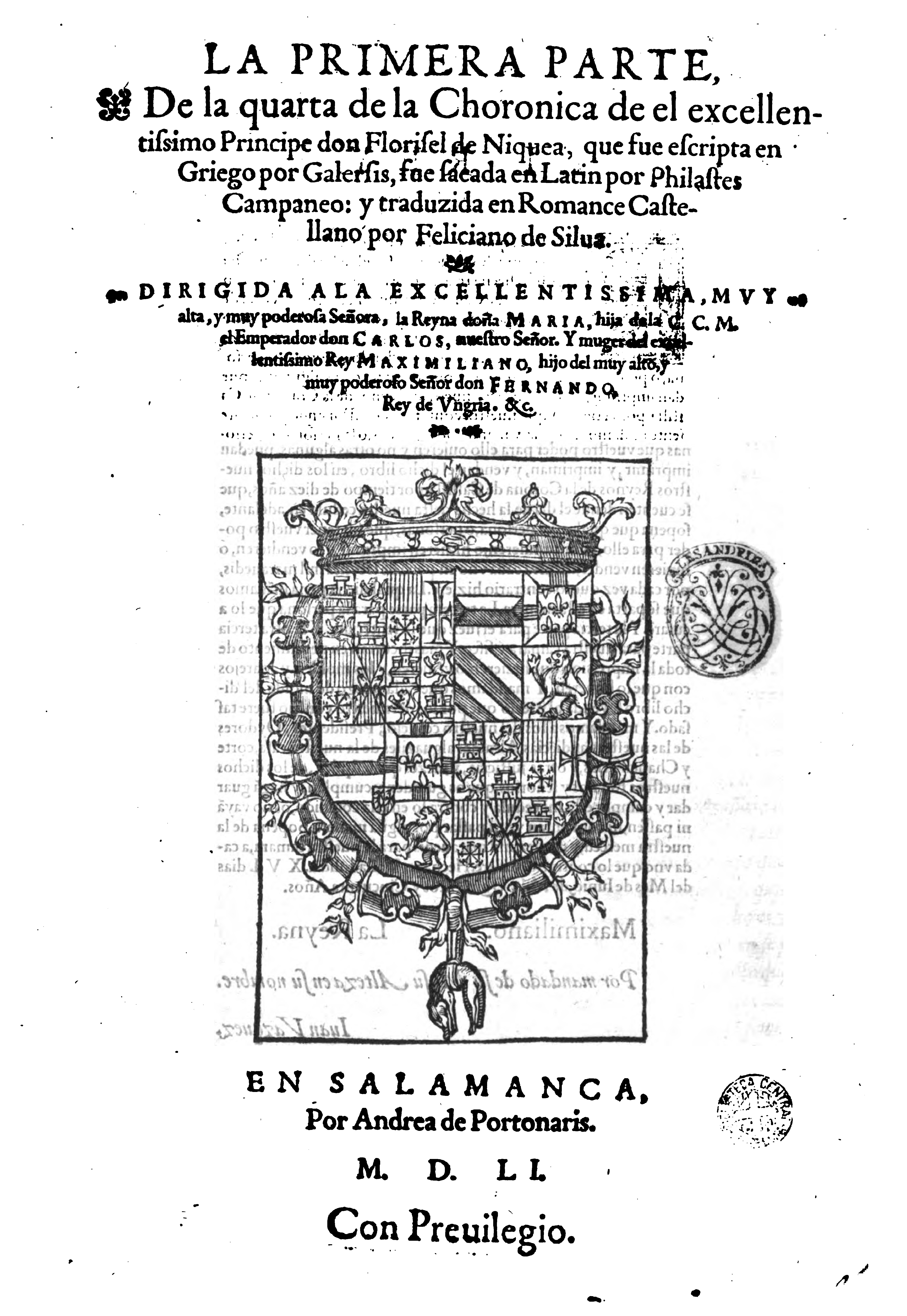


Amadís de Gaula
Series · 11 books · 1508-1551
Books in series

#1
Amadís de Gaula I
1508
You know the story: A knight in shining armor does brave acts of chivalry, with help or opposition from a sorcerer. The knight also serves an unobtainable princess with total devotion. And he's unbeatable in battle.
This fantasy meta-story has been floating around in the European collective consciousness since ... well, if you're well-read, you know that Miguel de Cervantes wrote "Don Quixote de La Mancha" to ridicule these stories. And that's probably all you know.
Here's your chance to learn the truth.
In the Middle Ages, troubadours circulated stories about King Arthur and the Knights of the Round Table throughout Europe. In Spain, these stories coalesced around one knight, Amadis of Gaul, who lived before King Arthur and was the greatest knight in the world. The stories were collected and expanded in a novel by Garcí Rodríguez de Montalvo right when the printing press became big business.
This novel became Renaissance Europe's first best-seller. It spawned dozens of sequels and a hundred spin-offs, popular with emperors and peasants alike. Nobles dressed up and re-enacted the stories. A century later it had gotten so silly that Cervantes cashed in with a satire.
And yet, even he insisted that "Amadis of Gaul" was so good it deserved to be read.
You can do that. Sue Burke has been translating "Amadis of Gaul" from medieval Spanish to modern English a chapter at a time at http://amadisofgaul.blogspot.com, and the collected chapters for Book I of the four-part novel are available as a book.
It's the Middle Ages in its own words, and you might be in for a surprise.
First of all, there's sex. All that repression and chastity belt nonsense was invented in the Renaissance or later. Amadis is born out of wedlock, in fact. And although Amadis is too pure to accept carnal thanks from the damsels he rescues, other knights do.
Then, there's violence. Knights hack each other to death bit by bit with swords as body parts fall to the ground. Or they smite their opponents in one gruesome blow with a lance. Or chop their heads in two with axes. Amadis always wins, but sometimes just barely. At one point, he's trying to hide his identity and is recognized by the scars on his face. This book drips with blood.
As for the sorcerers, even the good ones do creepy things, and the bad ones are arrogant and evil. The worst sorcerer of all, Amadis' sworn enemy, ought to be smote but somehow he keeps getting away while his minions get burned at the stake.
Be prepared for a typical medieval story, too: interweaving plots. This isn't just about Amadis. This book tells the story of his family, his friends, his king, and their families and friends. Everyone has adventures.
Finally, you can discover why women treasured this novel to the point that religious authorities became alarmed. It wasn't just over the love and sex, although the love story between Amadis and Princess Oriana does get scandalous. In the Middle Ages, women filled important roles, and as their lives became more and more restricted in the Renaissance, they could escape to the past with this exciting book.
And if you're a writer, remember what Antoní Gaudí said: "Originality consists in returning to the origin." Here's where it all started, the story that was eventually turned into the watered-down trope that fills so many bookstore shelves today. Here is the real medieval fantasy.
This book drove Don Quixote mad. What will it do to you?

#2
Amadís de Gaula II
1508
In medieval times, troubadours and poets recounted tales of knights-errant. They fought evildoers and magical beings, and each knight served his lady in accordance with the rules of chivalric love.
But what happens when the greatest knight in the world is spurned by the princess he secretly loves?
That’s the story in Book II of Amadis of Gaul. Amadis has become the lord of a fabulous island, and he abandons it all to escape her wrath. But giants need to be slain, wars need to be won, and the search is on to find him.

#3
Amadís de Gaula III (Narrativa)
1508
Published in Spain in 1508, this novel is a masterpiece of medieval fantasy.
In Book III, Amadis travels throughout Europe gaining fame as the Knight of the Green Sword. Among his feats, he challenges the devilish beast called the Endriago and wins the gratitude of the Emperor of Constantinople. But back in Great Britain, his beloved Princess Oriana secretly gives birth to his son. Then her father, King Lisuarte, decides to give her as a bride to the Emperor of Rome. Amadis must rescue Oriana.
This book drove Don Quixote mad. What will it do to you?

#4
Amadís de Gaula
Libro IV (Narrativa)
1508
Amadís de Gaula es una obra maestra de la literatura fantástica en castellano y el más famoso de los llamados libros de caballería, que hicieron furor a lo largo del siglo XVI en España. A fines del siglo XV Garci Rodríguez de Montalvo preparó su versión definitiva. Su edición más antigua conocida es la de Zaragoza de 1508, con el nombre de Los cuatro libros de Amadís de Gaula. Sin embargo se trata de una obra muy anterior, que ya existía en tres libros desde el siglo XIV. Así consta en obras del canciller Pero López de Ayala y de Pero Ferrús. Montalvo confiesa haber enmendado los tres primeros libros y ser el autor del cuarto. Todo indica que la versión original de Amadis era portuguesa. Se ha atribuido a diversos la Crónica portuguesa de Gomes Eanes de Azurara, escrita en 1454, menciona como su autor a un tal Vasco de Lobeira que fue armado caballero en la batalla de Aljubarrota (1385). Otras fuentes dicen que el autor del Amadís de Gaula fue un tal João de Lobeira, y no el trovador Vasco de Lobeira. La aceptación del Amadís de Gaula determinó que dicha obra se transformara en paradigma o modelo de referencia para otros escritores. La historia del heroico caballero andante que destacaba por su idílica fidelidad amorosa fue un punto de partida para un género literario muy duradero. Libros de caballería como el Amadís de Gaula se escriben y se difunden durante los mismos años del descubrimiento del Nuevo Mundo. Por entonces España se lanza a la conquista y colonización de aquellos nuevos territorios donde muchos depositan sus sueños y sus esperanzas. Curiosamente, entre estos dos fenómenos, el literario y el histórico, va a producirse una estrecha relación simbiótica.

#5
Las Sergas de Esplandián
1510
Las Sergas narran las hazañas del caballero medieval Esplandián, hijo del mítico Rey Amadís de Gaula. El relato evoca una misión colectiva para todos los caballeros cristianos, impulsada por la promesa de riquezas y aventuras, un viaje desde la antigua Constantinopla hasta California. Escrito entre los siglos XVI y XVII, por Montalvo, regidor de Medina del Campo, en plena expansión imperial de Castilla, es donde aparece por primera vez el topónimo California –nombre de la mitológica isla de las amazonas, reflejo de riqueza y exotismo adecuado a la imagen que el Viejo Mundo tenía de las nuevas tierras conquistadas– refiriéndose a una isla paradisíaca a la diestra de las Indias. Ed. 1510.

#6
Florisando
1510
Este trabajo incluye la primera edición crítica de la obra Florisando (1510), título abreviado con el que se le conoce, de Páez de Ribera. La nuestra es la primera edición moderna del texto. En la presente edición se cotejan todos los ejemplares conservados hasta la fecha. Destacamos la importancia de esta obra, sin la cual no se comprende la configuración del género de los libros de caballería y de la novela.

#10
Florisel de Niquea, partes I-II
1532
Esta edición de "Florisel de Niquea" realizada por Linda Pellegrino es el resultado de sus investigaciones durante el Doctotado en Letterature comparate e Scienze della Letteratura en la Universidad de Verona, pone por primera vez a disposición del público lector este libro rebosante de imaginación de nuevas propuestas para la futura novela moderna. Se pone en evidencia la función estructuradora del protagonismo múltiple derivado del ciclo palmeriniano, que funda la intriga en la alternancia de secuencias narrativas centradas en los encuentros y desencuentros de los héroes. La duplicación de varios esquemas formulares dilata e intensifica los acontecimientos en un fantasmagórico juego pirotécnico de sorpresas sucesivas que alimentan la expectativa del lector y no dejan nunca aflojar la tensión. La guerra devastadora desencadenada por el amor entre Helena y Florisel resucita ecos clásicos y consigue una dimensión épica, ofreciendo, a la vez, la ocasión de lucir armas y colores, diálogos y arengas, técnicas de asedio y largas reseñas de ejércitos de exóticas reinas guerreras del Cáucaso, de Sarmacia y de Hircania, que pueden entrar en batalla con once mil amazonas, en carros tirados por unicornios y acompañados por elefantes.

#11
Florisel de Niquea (tercera parte)
1535

#12
Primero y Segvndo libro de la quarta parte de la Choronica del excelentissimo principe don Florisel de Niquea
1551
En la presente Cuarta Parte de Florisel de Niquea (libro I) encontraremos todos los ingredientes propios de la novela caballeresca. Aventuras fantásticas se sucederán de manera ininterrumpida sorprendiendo a nuestro héroe y enfrentándole a las más inusitadas situaciones. Rogel de Grecia, hijo de Florisel de Niquea ocupa este primer libro de la Cuarta Parte del Florisel. Ocultando su verdadera identidad, unas veces bajo el disfraz de pastor, haziéndose llamar Arquileo, otras bajo la figura del caballero Constantino, y otras ya con su verdadera identidad, en la corte griega como príncipe Rogel, se enfrentará a una cadena de aventuras que le harán luchar con los más temibles gigantes: Bravasón, Gadalón, Cinofal; así como con los más poderosos ejércitos de reyes paganos que atacan
Constantinopla.
Pilar Villaverde
#12
Silves de la Selva
1546

#1-2
Amadis of Gaul
Books I and II
1508
In the long history of European prose fiction, few works have been more influential and more popular than the romance of chivalry Amadis of Gaul. Although its original author is unknown, it was probably written during the early fourteenth century.
The first great bestseller of the age of printing, Amadis of Gaul was translated into dozens of languages and spawned sequels and imitators over the centuries. A handsome, valiant, and undefeatable knight, Amadis is perhaps best known today as Don Quixote's favorite knight-errant and model. This exquisite English translation restores a masterpiece to print.
Authors

Garci Rodríguez de Montalvo
Author · 4 books
Castilian author who arranged the modern version of the chivalric romance Amadis of Gaul, written in three books in the 13th century by an unknown author. Montalvo added a fourth book of his own and also wrote a sequel, Las sergas de Esplandián (The Exploits of Esplandián or The Adventures of Esplandián) (oldest known printing, 1510), in which he tells the life and wandering of Amadis' eldest son. He is also known for coining the name of California.